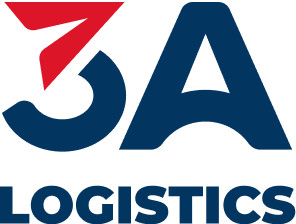In the final months of 2023, Vietnam’s seaports are experiencing a breathtaking transformation. From handling a mere 1.8 – 2 million tons of goods in the 1980s, the Hai Phong seaport has now evolved into a bustling trading hub, handling hundreds of millions of tons of cargo annually. Join us on a journey through the phenomenal growth and development of Vietnam’s seaport industry, driven by open policies and investment attraction, positioning the country as a major player on the global maritime stage.
At the end of 2023, the Hai Phong seaport continues to bustle with ships and cargo. It is hard to imagine that from the ‘six warehouses’ of the past, this area has now become the largest trading port in Northern Vietnam with hundreds of warehouses and dozens of seaports stretching from the Cam River to Lach Huyen.
The Vietnamese seaport system has now essentially met the demand for transporting goods by sea. An incredible statistic, from 1.8 – 2 million tons of goods passing through in the 1980s, today the Hai Phong seaport handles hundreds of millions of tons of cargo annually.
Mr. Cao Trung Ngoan, who has been involved in the maritime industry for over 40 years, recalls that in the past, the Chua Ve port area used to receive ships with a cargo capacity of about 5,000 – 7,000 tons, but now it can handle ships with a capacity of up to 20,000 tons. Meanwhile, at Lach Huyen, ships with a capacity of over 140,000 DWT can be accommodated.
According to the Hai Phong Maritime Administration, the Hai Phong seaport area currently has two ports operating routes to the Americas. Among them, TC-HICT port has 6 routes with a frequency of 6 ships per week, and Vip Greenport port operates 1 route. MPC Port also has the Silver Queen ship (leased by VinFast) for exporting cars to the United States and Canada (already exported on 3 trips).
 Cảng Hải Phòng, Việt Nam
Cảng Hải Phòng, Việt Nam
In Ba Ria – Vung Tau, statistics from the Vung Tau Maritime Administration show that by September 2023, the Cai Mep – Thi Vai port complex had established 35 international container ship routes into the port weekly, including 11 routes to Asia, 10 routes to the East Coast of the United States, 8 routes to the West Coast of the United States, 2 routes to the United States – Canada, and 4 routes to Europe.
Mr. Ngoan affirms that this is an impressive development of the Vietnamese seaport system, which would not have been possible without the right direction from the government and the Ministry of Transport.
Open Policies and Investment Attraction Have Transformed the Landscape
According to the Vietnam Maritime Administration, the comprehensive development plan for the Vietnamese seaport system was first approved by the Prime Minister in 1999. This plan marked a crucial starting point for developing the national seaport system on a nationwide scale. This plan served as the basis for subsequent development plans for the periods 2011-2020, and 2021-2030, with a vision until 2050.
Mr. Nguyen Xuan Tuan, Deputy Head of the Planning and Investment Department of the Vietnam Maritime Administration, emphasizes that this seaport plan has been the foundation for attracting resources, both domestically and internationally, and the implementation of open policies for investment in port infrastructure.
Numerous world-leading transportation and port operation conglomerates, such as Hutchison, PSA, DP World, SSA, Maersk A/S, CMA – CGM, and APMT, have entered the Vietnamese market to establish joint ventures for port construction and operation.
Currently, many foreign investors continue to express their interest in investing and operating port infrastructure in areas such as Lach Huyen, Lien Chieu, and Cai Mep – Thi Vai.
However, according to Mr. Tuan, in order to maintain and enhance the seaport’s position, there is a need to improve aspects such as policy mechanisms, resource mobilization, infrastructure connectivity, customs, and cargo handling fees. These are essential to ensure the continued development and elevation of Vietnam’s seaport system on the international maritime map.












